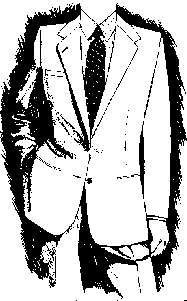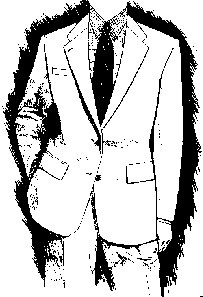Mark Seitelman wrote:I must post a defense for Alan Flusser.
I have known Alan for at least 10 years, and I was a good customer at his Saks Fifth Avenue Custom Shop. He sold me my first made to measure suit.
Alan is a great dresser. He used to be more formal in that he would never allow himself to photographed in anything but a coat and tie. Lately he has been fairly casual and a little bit shaggy.
In the Charlie Rose interview (2002), Alan's coat got bunched-up, and he probably was not sitting straight. He was a bit nervous because he is not a TV person. The Rose staff should have had Alan un-bunch his coat. You should note that Rose has no bunch-up because he is a trained TV personality. It should be noted that where Alan had control over a filming he looked great. I have a set of "how to dress" VCR tapes that he did for Coppley Clothing, and he was very well dressed.
If you talked to Alan about the "rules" he could discuss them as well as anyone. However, he always has had individual touches. He is in the clothing business, and he is not a bank manager. I recall that when I first worked with him he wore Belgian slippers with his suits. Very elegant. On one occasion at the store on a Saturday he wore an old, grey sweat shirt with a beautiful Michael Drake wook chalis scarf (the unicorn).
Alan's books are classics. They have influenced me and countless others.
I have fond memories of my dealings with Alan, Mark, and staff, and I recommend the Flusser Shop. It is probably one of the most beautiful shops in NYC, and as a poster collector I particularly like his PKZ posters.
I am a bit puzzled about the "attack Alan" movement on the internet which seems to be taking root here.
Dear Mark:
This is a nice post about Alan Flusser. I've never had the chance to meet him in person, but have met with Mark before. My first visit to the Flusser shop was in June of 2000 when they were at Saks. I went with Tom Hudson (Cuffthis) and brought my first ever seven fold tie there.
Haven't had a chance to get to the new shop, but I've had my friend and Haberdasher Bert Downes pick up a few things for me there when he's gone out to NYC.
As for Flusser's books, they're probably the best books to have in one's haberdashery library.
As for Alan's TV appearance, I can see why he'd be nervous when TV is not one's career. I'm studying broadcasting myself, and when I do on camera interviews and anchoring for class it can be very nerve racking.
Best Regards,
Cufflink79




